 Insight What are social stickers? Here’s what you need to know
Insight What are social stickers? Here’s what you need to know
Social stickers have seen an explosion in popularity in recent times, but what exactly are they, and how can they be utilised by brands?
In simple terms, social stickers are a glorified emoji. A way of expressing a feeling, a thought, or just plain old fun. As you can see in the image below, we went from having emoticons which were made of up of different characters to now having emoji and stickers.
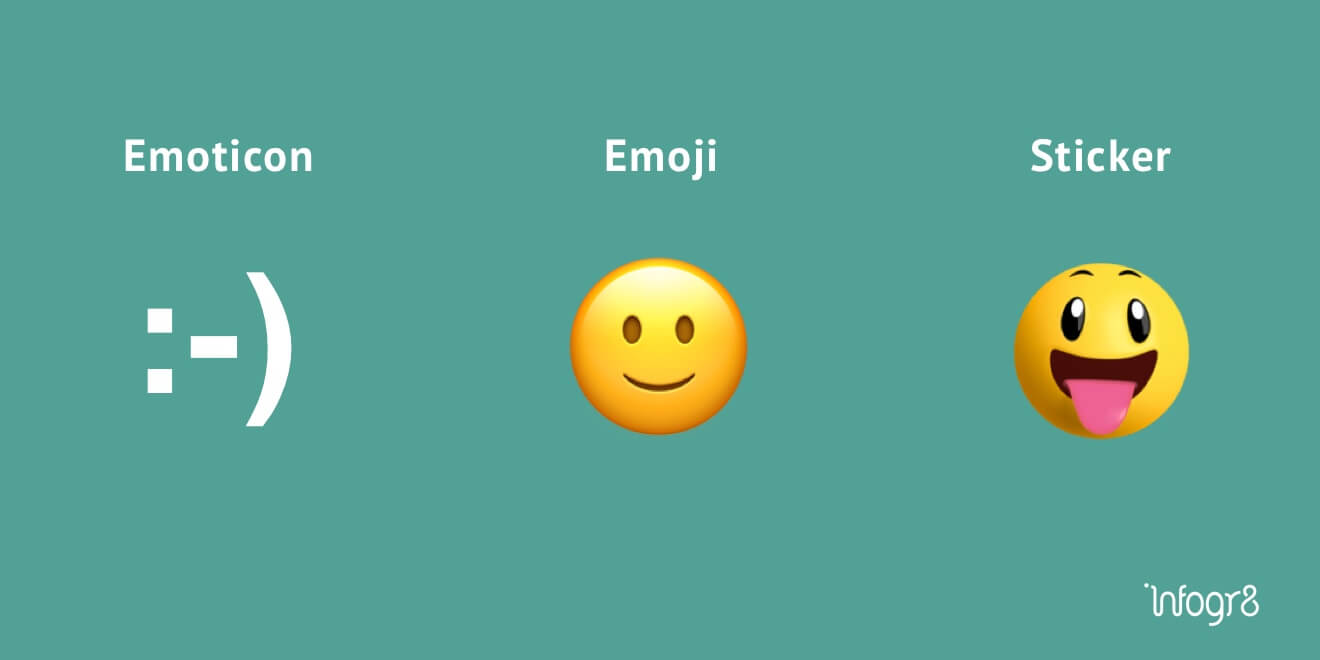
You can find them on pretty much any of the major messaging platform and social channels, but here are the main ones:
A way of humanising tech
The rise in popularity of social stickers has come at a time where tech is making the move to becoming more human. Before we had language we relied mostly on grunting and facial expressions. With new forms of communication, we are not always face-to-face. This is where emoji and stickers have provided a way of adding that “human touch”. As we try to humanise technology, and as brands try to become more human, these ways of communicating become even more important. Scientists have discovered that when we look at emoji, it activates the same part of our brains as when we look at human faces. Sometimes people even mimic the emoji expression.
Think about those times you read your reply to a friend’s message and the tone seems harsh, then you send a smiley face to make sure they don’t get the wrong impression. If that conversation was face-to-face you’d have given that smile, but over a message we can show the same gesture with an emoji or sticker. Researchers suggest that sending an emoticon can help reinforce a message’s meaning and increase its clarity.
Emoji/stickers have become a sort of universal language of messaging platforms. We could speak two different languages, but still understand the sentiment behind the annoyed emoji face.
Why do brands use social stickers?
In our most recent infocus post we talked about how word of mouth is the best marketing you can hope for. Indeed, according to a stat from Nielsen, “a whopping 92% of consumers believe recommendations from friends and family over all forms of advertising.” The problem is, these conversations are happening in private via WhatsApp, Facebook Messenger, email, and so on. With the rise of what is known as ‘dark social,’ the challenge marketers face is how can they influence consumers within these gated exchanges? Social stickers are the perfect solution. By penetrating these conversations with their own bespoke media, brands can utilise social stickers in a variety of different ways. One way is building a positive brand sentiment, which could be based on an ad campaign or a product/service. This is particularly popular in Asian countries where stickers have been used to promote new films, announce album releases, advertise drinks and introduce new services. Vivian Rosenthal, from Forbes, makes this point in her insightful article:
“The branded emoji and stickers sent in messaging between friends is the ultimate word of mouth vehicle to discover a new product, film or TV show.”
Who’s got good sticker game?
Super Mario Run Sticker pack for iMessage
Before the release of their highly anticipated iOS game Super Mario Run, Nintendo put together a sticker pack for iMessage as a way of building up hype. Users could stick different characters from the Super Mario series into their iMessage conversations or add Mario’s infamous moustache to a photo. Fun stuff!
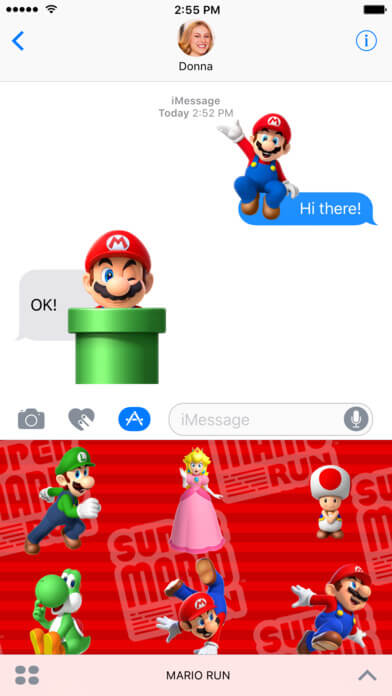
John Lewis’ Christmas ad Twitter stickers
John Lewis are renowned for their Christmas ads. So much so, that it’s become synonymous with Christmas itself. In their 2016 Christmas ad, John Lewis featured a dog called Buster alongside lots of different animals. Using Twitter stickers, John Lewis were able to get people to participate in promoting their Christmas ad as well as adding to the sentiment of John Lewis and Christmas. Tying in cute animals to a social media campaign is never a bad move.

It’s hard to imagine John Lewis making social stickers in the context of their department stores and the products they sell. However, the theme for their Christmas ad provided just the right ingredients for social stickers — cute animals and a dog called Buster. Nintendo, on the other hand, you could say were more suited to social stickers as they have popular game characters. Their Super Mario Run sticker pack was well timed, using their most famous character to push their new release on iOS.
Talking about using animals as social stickers, we did exactly this for one our clients, RSPCA Assured. As part of the brand guidelines we created for them, there were a lot of visual assets of animals that we atomised into social stickers, providing a fun and engaging way for people to interact with their content.
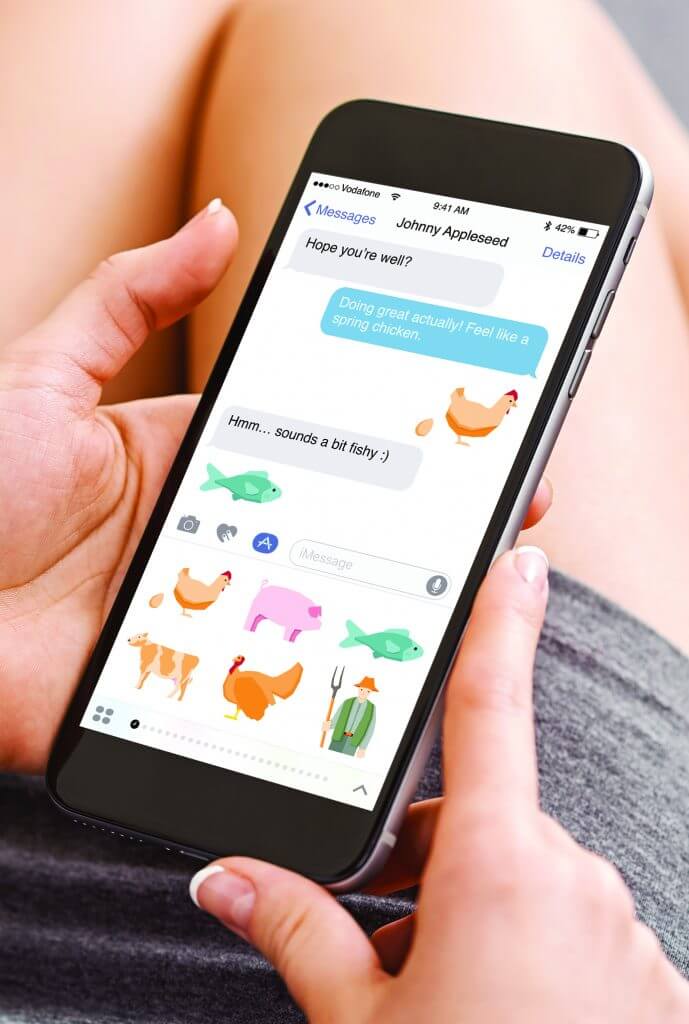
The above examples were free social stickers. However, there’s a tremendous amount of revenue being generated in this space. The app Line, which is seen as being the app that ignited the sticker trend back when they first started out in 2011, generated a whopping $268 million in revenue from stickers in 2015.
Let’s look at some data
According to Bare Tree Media, users show high engagement with branded sticker packs. On average, each user spends 3.5 minutes per session.
Bare Tree Media report estimates the platforms stickers are shared in the U.S. from 2016.
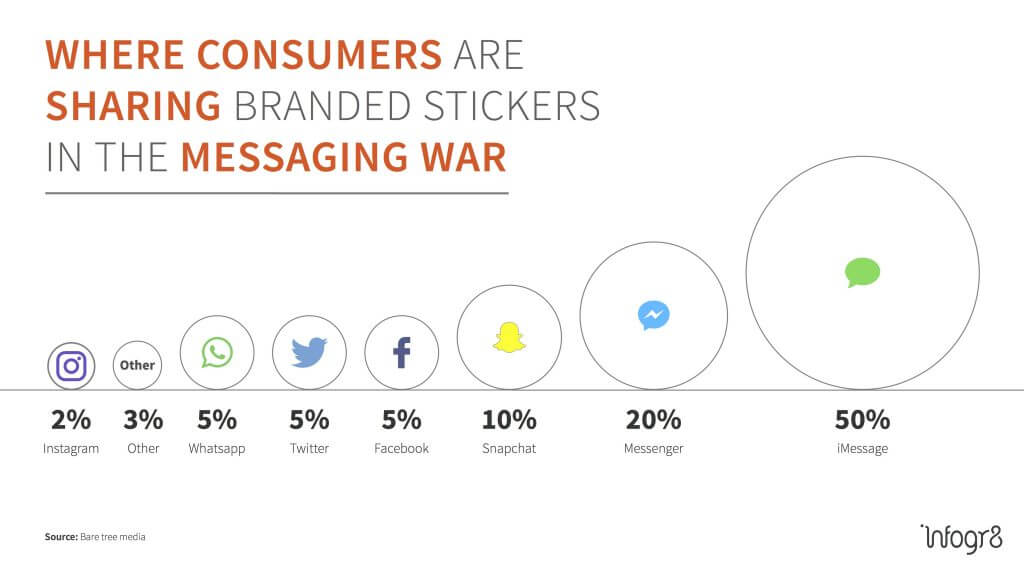
They also estimate that more than 6 billion emoji or stickers were sent every day during 2016 on mobile messaging apps. Another research company called AppBoy reports that between June 2015 and June 2016, there was a 609% increase year-over-year growth in branded campaigns using emojis. During this period over 800 million branded emoji messages were sent.
Where will social stickers lead us?
Where is this trend heading? We touched on this in our latest white paper on interactive content:
The next big wave of features coming to a device near you is from virtual reality’s cousin, augmented reality. On first sight a lot of the features may look like fun gimmicks, for example Snapchat’s new world lenses. When using the app, the user can bring up the 3D lens that allows them to choose an object, like a rainbow, and superimpose it into their surroundings. The rainbow looks like it exists in the real world — it looks bigger as you walk closer to it. Facebook have also announced similar features for their in- app cameras, although it’s a beta platform for developers, it sets the wheels in motion for some interesting exploration.
This is just the beginning, you can imagine that we’ll soon be able to point our camera at a pair of shoes and get information like name, size, price, and a buy button. The early stages of this exists in the form of Amazon’s app where you can scan an item using a barcode or photo recognition. There’s also Pinterest’s Lens that does a visual search based on your photo and offers you suggested pins. Smart stuff although with augmented reality these features can be taken to a whole new level of interactivity.
It’s a fascinating time for tech, and what is possible is being imagined as I write this sentence. Take the latest Apple ad for example, it brings the act of sharing stickers and makes it literal — slapping stickers on each other! But with the announcements from Snapchat and Facebook, Apple’s ad doesn’t seem to be so much of an exaggeration. The next iPhone is rumoured to have a focus on augmented reality tech embedded in the device, and Apple recently released an app called Clips for “making and sharing fun videos with text, effects, graphics, and more.”
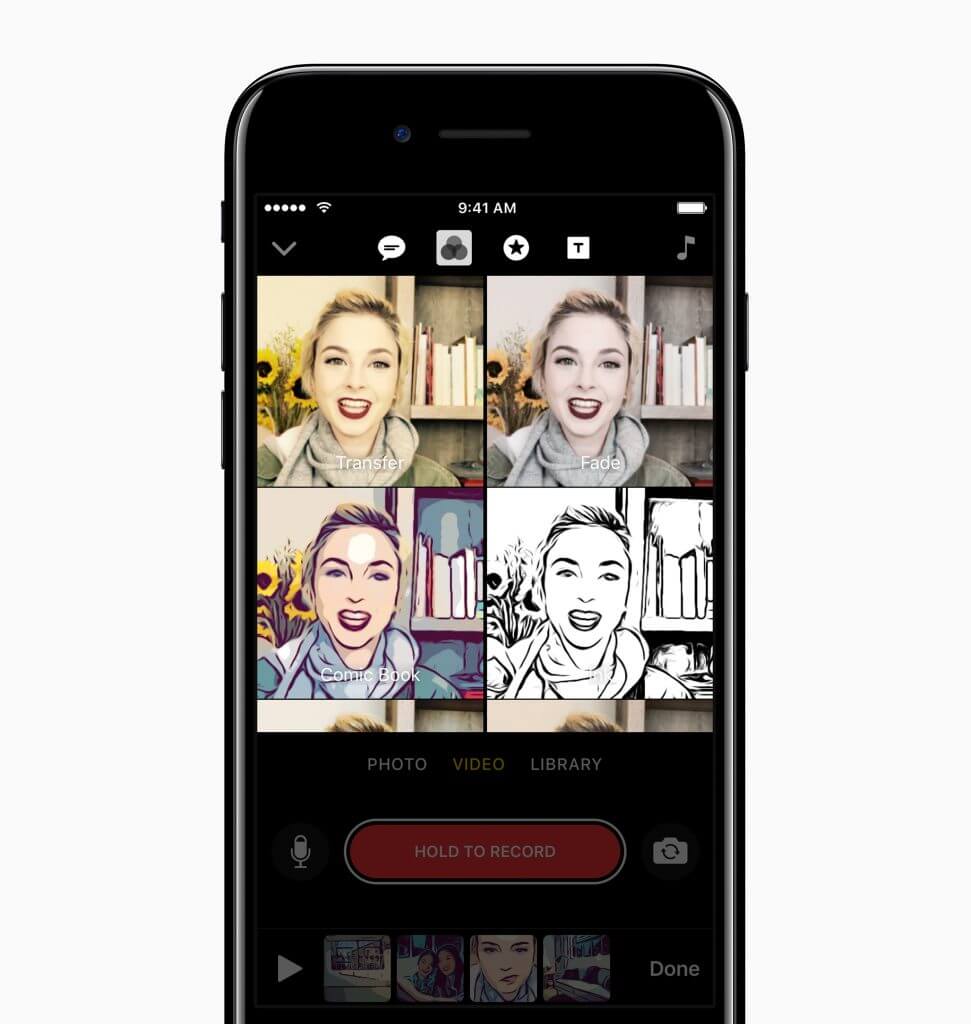
We can’t end this section without mentioning Pokémon Go. If what’s to come looks like what we see in Apple’s ad, then you can see it happening at the latest announcement of a series of community events that will see streets temporarily closed off to allow routes for people to come together, socialise, and… play Pokémon Go.
Conclusion: Social stickers are more than just fun
If you haven’t explored the world of social stickers, then have a go — trust me it’s fun!
You’ll see that it’s not just teenagers who use them. A survey from OnDevice found that 40% of active smartphone users actively use stickers. Over 20% of sticker users had paid for a sticker set at least once. See charts below for geographic specific data.
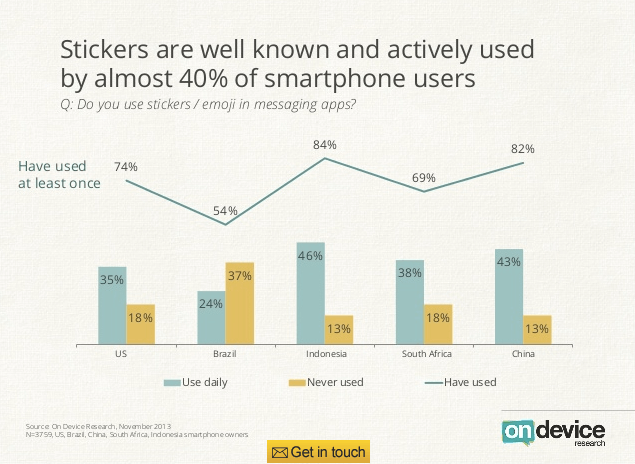
For marketers, new ways of communicating are vital to a content strategy, and social stickers stand out as an interesting avenue to explore now and also for the near future.
